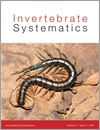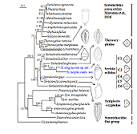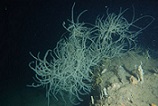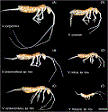IS17081Systematic revision and phylogenetic reassessment of the centipede genera Rhysida Wood, 1862 and Alluropus Silvestri, 1912 (Chilopoda: Scolopendromorpha) in Southeast Asia, with further discussion of the subfamily Otostigminae

Molecular phylogeny has proven invaluable in identifying species in the mostly tropical centipede family Scolopendridae. Revision of SE Asian species of the scolopendrid genera Rhysida and Alluropus is based on classical external morphological characters for clades underpinned by multi-gene trees. The previously enigmatic Alluropus is found to be widespread throughout SE Asia, the supposedly diagnostic characters of its type species reflecting sexual variation.














